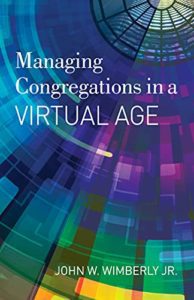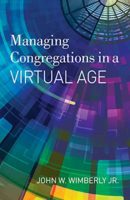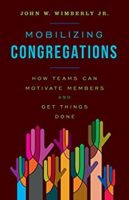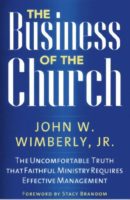Fifty-eight percent of professional workers say they are “more productive when working virtually, even if there are distractions such as a spouse and children at home.” This finding from a survey by the global consulting firm Korn Ferry is one of many indications that for some American workers, productivity has improved. How about your congregational staff? Has their productivity increased, decreased, or stayed the same since February 2020?
Based on my conversations with consulting clients and clergy for my forthcoming book, Managing Congregations in a Virtual Age, productivity has increased. Clergy and others do complain about the extra work they have had to do during the pandemic. People are exhausted and some are burned out. But over the past 14 months, church staffs have risen to new levels of productivity as they have created live-streamed or recorded worship services, used Zoom to conduct business meetings and achieve the congregation’s mission, and became proficient with all kinds of previously unfamiliar software and equipment.
What Productivity Means
Productivity, of course, is not just working more hours. Productivity is typically defined as the amount of output produced in a work hour. Based on my conversations, I believe that staff members are not only working more hours, but getting more work done per hour. Take, as an example, the speed with which congregations, small to large, put their worship services online. Some did it in a matter of days, others in a matter of weeks. Either way, it took not only a lot of hours but a lot of highly productive hours to make the transition so quickly.
We have entered a hybrid world. Going forward, congregational staff will work both remotely and in the office. Using what we have learned during the pandemic, hybrid work has the potential to generate higher productivity in ministry.
Congregational staff should never again be judged by the number of hours they sit at their desks in the office. (Of course, they never should have been judged that way in the past—but too often, they were.) Performance should be judged on output, whether it is produced remotely or in the congregation’s office. If people are more productive and effective working remotely—at home, a Starbucks, or the beach—why would we not want them to work that way?
Work at Home and Elsewhere
Ministry will be hybrid, not totally virtual. Some parts of ministry need to stay in the office. Certain types of managerial conversations are most productive face-to-face. Staff camaraderie is built most easily in person. Choirs still need to rehearse together. The list goes on.
Some things we want congregational staff to do require them to be away from home and office. We want them visiting in homes and hospitals, participating in community meetings about justice issues, providing leadership in denominational meetings, etc., so “remote work” is a better term than “working from home.” Every staff person’s performance review should include productivity metrics for both office-based and remote ministry activities.
Pre-pandemic, pastoral care had already become hybrid to a degree. A text or email message can be very healing and supportive. However, clergy sometimes get in trouble by over-relying on remote communications. Nothing can replace an in-person visit to a home after the death of a family member, a face-to-face discussion with someone who is going through a vocational crisis, or a personal visit to a hospice, hospital, or nursing home. A crucial skill for today’s clergy is to understand which style of pastoral care meets each parishioner’s need at any moment.
More Productive Meetings
Not only staffs but volunteers as well have become more productive during the pandemic. Virtual meetings, by their nature, boost productivity boost by eliminating the commute. Even if the meeting is only 15 minutes away, a half hour of non-productive time can be eliminated from the productivity equation. In addition, almost everyone reports that the meetings themselves have become more efficient. Many meetings that routinely lasted 90 minutes now take place in 60.
Governing boards that meet on Zoom spend less time on “show and tell” reports. Instead, members read reports circulated before meetings. Why are people reading reports in advance of a Zoom meeting when many did not read them before? Who knows—but people tell me it is happening. Meetings can focus on more important issues like “How will we attract and retain millennials and Gen Zers?” “How will we help our members in their personal spiritual growth journeys?” and “How will we become effective advocates for racial and social justice?”
John Wimberly is an experienced pastor and consultant. As a consultant, he has worked with congregations and judicatories on strategic planning, staff designs for the 21st century, and congregational growth as well as financial and administrative management. He has MBA, MDiv, and PhD (theology) degrees. His books focus on effective management and leadership. John believes congregations can have a bright future!




